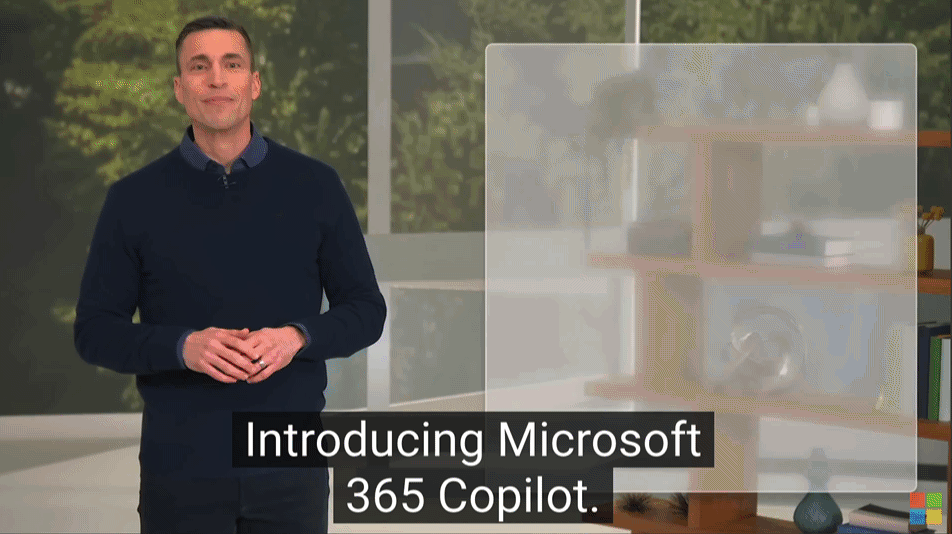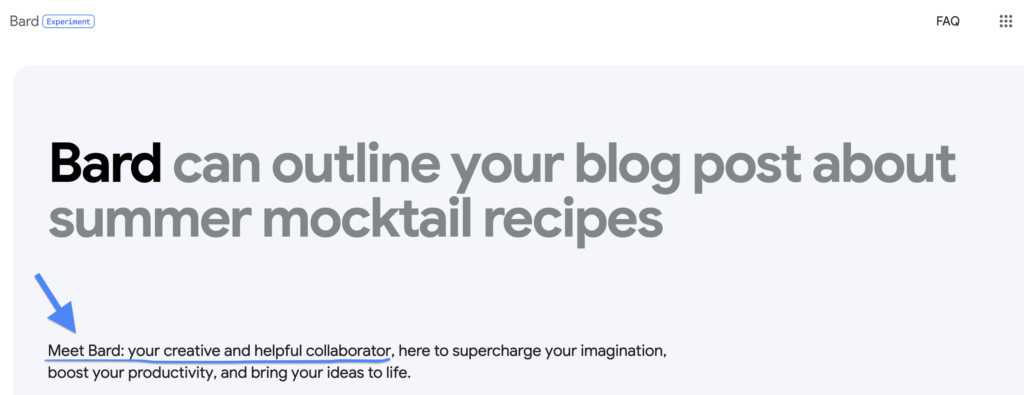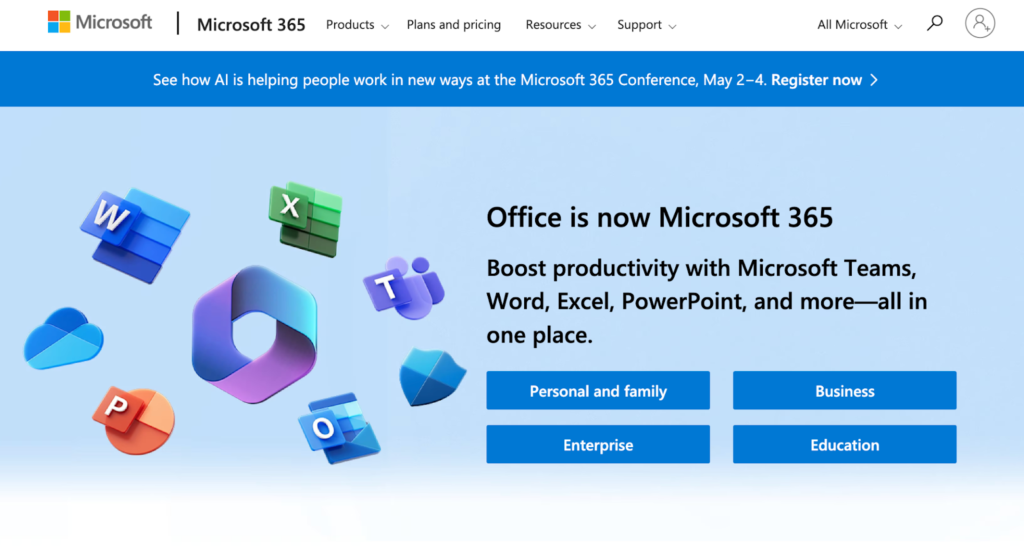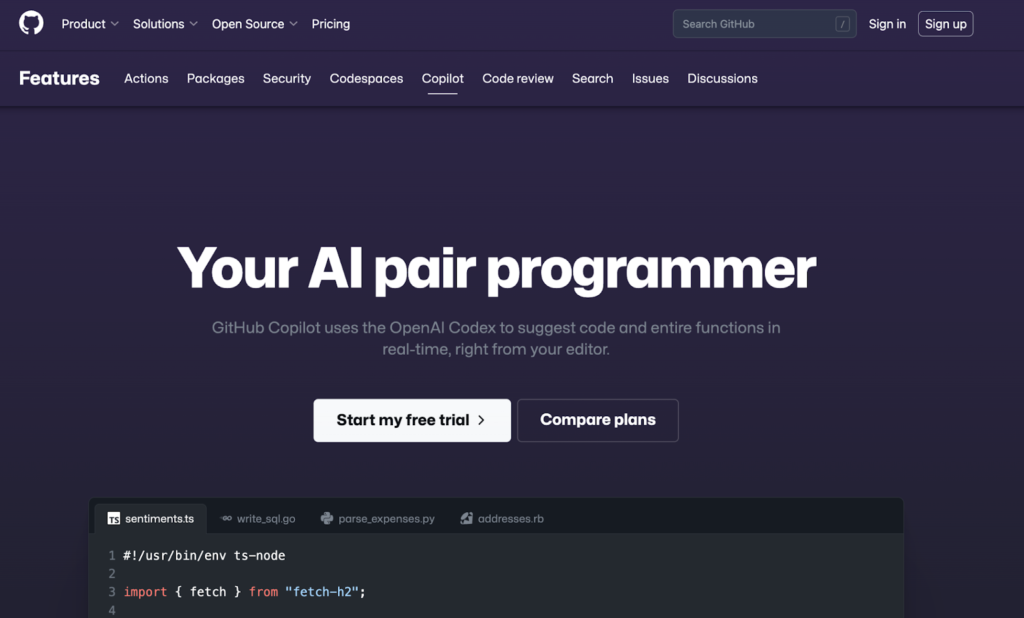There have rightfully been tons of articles written about GPT-powered AI’s impact on marketing.
But lately I’ve found my mind wandering to the other side of the coin:
How will GPT-powered AI be marketed?
Which companies will nail communicating the incredible power of this technology to customers?
Who will be able to translate its benefits into something as clear and simple as “1,000 songs in your pocket”?
The first time I felt something close to that magical iPod feeling came while watching the demo for Microsoft Copilot—the GPT-powered product that will soon change the way you work with familiar Microsoft apps like Word, PowerPoint, Excel, and Outlook.

There’s not yet a tagline to rival “1,000 songs in your pocket,” but the name itself—Copilot—is an incredible jumping-off point for effectively positioning the product. It’s a notch up from “assistant” in terms of perceived value, but it stops short of instilling “I’m about to take your job” fear.
It’s easy to see how it stands out relative to Google Bard’s “creative and helpful collaborator” descriptor:

The average worker may not have heard of Copilot yet, but many will soon use it every day. If you go to the Microsoft 365 (formerly Microsoft Office) product page, not only is the Copilot logo featured—it’s positioned as the center of the 365 universe:

Blurbs about Copilot can be found throughout various product pages, but as of now Microsoft hasn’t built a dedicated page for it that we can analyze in a meaningful way.
But fortunately for copy nerds, this isn’t Microsoft’s only Copilot.
In fact, another version of this software has already been around for about two years, quietly reshaping the way many computer programmers work.
I’m talking about GitHub Copilot—the AI-powered tool created by OpenAI and GitHub (owned by Microsoft) that suggests code to developers.

GitHub Copilot is worth studying for three reasons:
- It’s one of the first GPT-powered products with crystal clear product-market fit.
- It seems to be growing quickly. GitHub reported that 1.2 million people had used it in mid 2022. Within two months of its public release, the company reported it had added 400,000 paying subscribers.
- It faces a tall task—convincing highly savvy customers it can suggest code they’d actually feel comfortable using.
GitHub seems to have a fundamental understanding of how the product benefits users and soothes pain points.
And the Copilot product page translates that understanding into copy that builds trust, earns buy-in, and succinctly explains a first-of-its-kind product.
Below, you’ll find a visual breakdown that takes you on a guided tour of the GitHub Copilot product page.
Let’s dive in!
Tip: The visual breakdown works like a slideshow: just click the arrow on the right side to advance (after you click the first time you can simply use your arrow keys). If you’re on mobile, turn your phone to landscape for the best experience!
While there are already dozens of other interesting approaches to marketing AI-powered products we could learn from, GitHub Copilot’s combination of execution and early success make it a particularly good one.
It starts with the mindset they have about building AI-powered products in the first place. This quote from Microsoft CEO Satya Nadella’s introduction in the Copilot demo I linked earlier is enlightening:
“For years, AI has in fact powered online experiences ranging from search to social media, working behind the scenes to serve up recommendations for us or about us. From what we watched to what websites we visit to what we buy, that version of AI has become so second nature in our digital lives that we often don’t even realize or recognize it.
“You could say we’ve been using AI on autopilot, and now this next generation of AI, we’re moving from autopilot to copilot. We’re already starting to see what these new copilots can unlock for software developers, for business processes like sales, marketing, and customer service, and for millions of people synthesizing information in powerful new ways through multi-turn conversational search. As we build this next generation of AI, we made a conscious design choice to put human agency both at a premium and at the center of the product. For the first time we have the access to AI that is as empowering as it is powerful.”
In the past, AI was something that mostly worked its magic under the hood. The average consumer might be benefiting from it without even realizing. Communicating its added value was tricky. Companies would often settle for sprinkling AI descriptors into copy just to make something sound more powerful. I saw tons of B2B SaaS companies throw it around partially because they thought it would allow them to charge more (and/or be more interesting to investors).
Now that it’s front and center and adding value in more broadly obvious ways, it’s natural that new ways of talking about it are emerging. In hindsight, “copilot” seems like an obvious metaphor. It made me wonder—could ChatGPT have come up with it?
So I asked:

Ugh. There’s that same old assistant angle I mentioned in the breakdown. But I wanted to get it down to one word:

Yuck. Let’s give it a nudge:

I just need to tell it to loosen up a bit:

While I know my prompts could have been a lot better, maybe Copilot wasn’t so obvious after all.
Let’s all just be glad they didn’t go with Brainstorm-Buddy.
